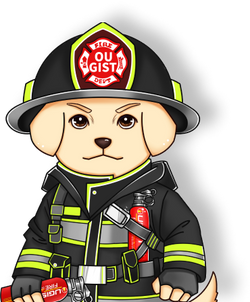In the world of fire safety, the diversity of fire extinguisher types reflects the unique challenges posed by different types of fires. Two common types, water and carbon dioxide (CO2) fire extinguishers, serve distinct purposes in combating fires fueled by varying materials. In this blog post, we'll explore the differences between water and CO2 fire extinguishers, shedding light on their characteristics and applications for effective fire suppression.
Water Fire Extinguishers:
Characteristics: Water fire extinguishers utilize plain water as their extinguishing agent. They are typically used for Class A fires involving ordinary combustible materials like wood, paper, and cloth.
Applications: Water fire extinguishers are most effective on fires fueled by solid materials. They work by cooling down the fire and reducing the temperature below the ignition point. They are commonly found in homes, offices, schools, and environments with a higher likelihood of Class A fires.
Limitations: Water fire extinguishers are not suitable for fires involving flammable liquids, electrical equipment, or combustible metals. Using a water extinguisher on these types of fires can exacerbate the danger.

CO2 Fire Extinguishers:
Characteristics: CO2 fire extinguishers contain carbon dioxide gas under high pressure. They are used for Class B and Class C fires, involving flammable liquids and gases as well as electrical equipment.
Applications: CO2 fire extinguishers are particularly effective for fires involving electrical equipment, as they leave no residue and do not conduct electricity. They also work on flammable liquid fires by displacing oxygen and suffocating the fire. CO2 extinguishers are often found in laboratories, server rooms, kitchens, and areas with electrical equipment.
Limitations: CO2 fire extinguishers should not be used on Class A fires involving solid materials, as they do not provide the cooling effect required for extinguishing these fires. Additionally, they have a limited range and duration of discharge.
Key Differences:
-
Extinguishing Mechanism:
- Water extinguishers work by cooling and reducing the temperature of the fire.
- CO2 extinguishers work by displacing oxygen and suffocating the fire.
-
Suitable Fire Classes:
- Water extinguishers are designed for Class A fires involving solid materials.
- CO2 extinguishers are suitable for Class B, Class C, and electrical fires.
-
Residue and Cleanup:
- Water extinguishers leave residue and may require cleanup after use.
- CO2 extinguishers do not leave residue, making them suitable for sensitive environments like electrical equipment rooms.
Choosing the Right Extinguisher:
Selecting the appropriate fire extinguisher depends on the fire risks present in a particular environment. Understanding the differences between water and CO2 fire extinguishers empowers individuals to make informed decisions in moments of fire emergencies.
We are a specialized manufacturer of fire extinguishers, feel free to contact me at any time.


